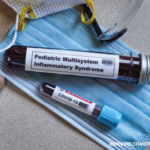Although not entirely effective in all situations, anti-inflammatory treatments have shown benefits for improving survival of patients with severe COVID-19, including such treatments as glucocorticoids, inhibition of IL-1 and IL-6, inhibition of GM-CSF and JAKi.
Dr. Cron, together with several co-authors, published an article discussing the role of anti-rheumatics in patients with COVID-19. These authors explained that heterogeneity in dosing and absence of uniform inclusion criteria and defined stage of disease in many clinical trials to date have affected conclusions and the ability to compare results between trials. Thus, these issues must be addressed in adequately powered clinical trials to better guide clinicians in the treatment of COVID-19 hyperinflammation.14
NETs
In the next session, Mariana Kaplan, MD, chief, Systemic Autoimmunity Branch, National Institute of Arthritis and Musculoskeletal and Skin Diseases (NIAMS), NIH, Bethesda, Md., discussed neutrophil dysregulation and neutrophil extracellular traps (NETs) in COVID-19. NETs, web-like chromatin structures decorated with neutrophil granules’ antimicrobial proteins, have been found to play a role in the protection against certain microbes and the promotion of immune dysregulation, organ damage, vascular injury and thrombosis.
Dr. Kaplan explained that NETs, which have been found to be elevated in patients with COVID-19, contribute to immunothrombosis in the disease and are even present in skin lesions from pediatric patients with the phenomenon known as COVID toe. COVID toe describes chilblains-like lesions seen in the toes of some patients with SARS-CoV-2 infection.
Dr. Kaplan made several key points in her talk: 1) signatures of neutrophil activation are enriched in patients with severe COVID-19 and are associated with poor outcomes; 2) children affected by COVID-19 display aberrant NET formation and degradation; and 3) it remains to be seen if targeting aberrant NET formation or specific neutrophil subsets will modify the natural history of disease or its chronic complications, such as in the form of long COVID-19 or the development of autoimmunity following infection.
The Lungs
Frank van de Veerdonk, MD, PhD, Radboud Center for Infectious Diseases, Radboud University Nijmegen Medical Center, The Netherlands, discussed the blockade of the kallikrein-kinin system in COVID-19.
Dr. van de Veerdonk and colleagues made the astute observation in early 2020 that pulmonary edema is a common feature of early COVID-19 disease. They hypothesized that it is due to a localized vascular issue from activation of bradykinin 1 receptor (B1R) and B2R on endothelial cells in the lungs. The SARS-CoV-2 virus enters the lining of the lungs through the ACE2 receptor in a very similar fashion to the related coronavirus that caused the SARS outbreak in the early 2000s. Because ACE2 is needed to inactivate the ligands of B1R, the shortage of available ACE2 receptors created by SARS-CoV-2 infection leads to an abundance of bradykinin and significant, diffuse pulmonary vascular leakage.15



